‘The master’s tools will never dismantle the master’s house.’ — Audre Lorde.
Audre Lorde’s words serve as both a warning and a lens, which is particularly apt when assessing stories that claim to challenge power while still operating within its safe, familiar confines. Aap Jaisa Koi, directed by Vivek Soni, at first glance, presents itself as a modern romance shaped by feminist ideals: the film centres women’s desire, questions tradition, and appears to champion emotional honesty. But the question remains: can a film truly interrogate patriarchy if it continues to speak its language, mirror its expectations, and ultimately excuse its imbalances?
Framed as a tender love story, the film offers moments of emotional sincerity, but upon closer examination, it appears to fall short of genuine subversion. Instead of dismantling the structures it critiques, it carefully tiptoes around them, refining the house rather than rebuilding it. And that is the central question one walks away with: Did Aap Jaisa Koi truly challenge patriarchy, or did it end up echoing it in a softer voice?
Love, longing, and gendered entitlement
Starring R. Madhavan and Fatima Sana Shaikh, the film engages with a tender theme: the interior world of women’s longing and choice. It is, in many ways, a welcome intervention in a cinematic landscape that still struggles to imagine women as desiring subjects. And yet, Aap Jaisa Koi leaves the viewer with a lingering dissatisfaction; its provocations are too neatly resolved, and its questions too cautiously posed. Why, one wonders, does it take us so long to arrive at this modest depiction of female agency? And having finally arrived, why are we still afraid to push further? While the movie sets out to say something new, it ultimately stops short of saying something bold.
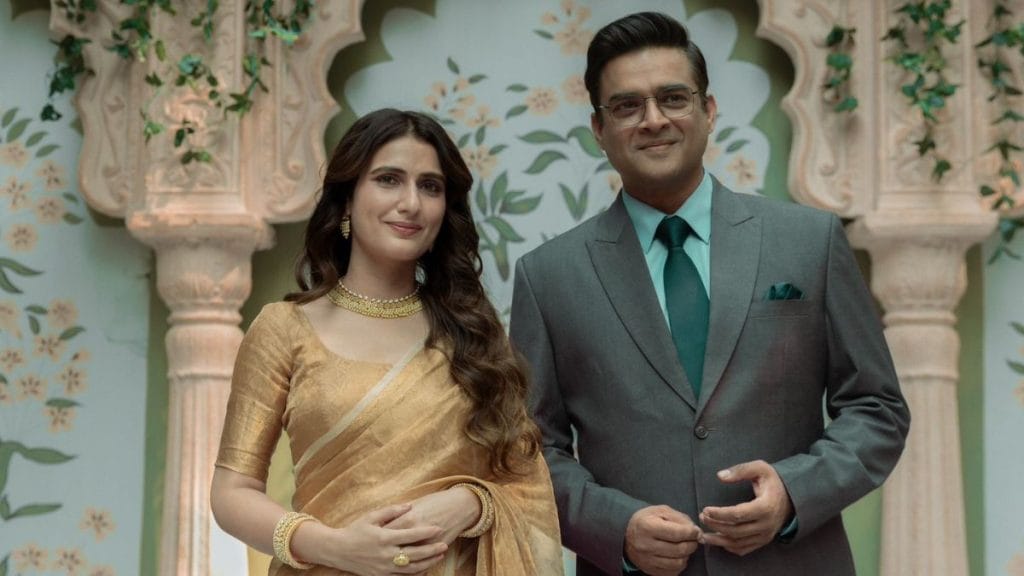
One of the film’s central narrative tensions is the return of Shrirenu (Madhavan) to Madhu (Shaikh), where he says, “Gussa thanda ho gaya hai, maaf kar rahe hain hum aapko. Aur aage bhi sab kuch allow karenge bas thora limit mein.” And his belief that he can “forgive” her and reclaim her is never fully interrogated. This sense of male entitlement is mirrored in Bhanu’s dynamic with Kusum, when he says “Yeh jo tumne kiya hai, iski maafi maang lo. Hum maaf kar denge” assuming that the only thing preventing their return to a “normal” married life is her failure to apologise, not her agency or will to leave. Both relationships rest on the assumption that a woman’s departure is a transgression that demands male absolution.
The absence of rounded female voices, despite the film’s thematic promises, feels like a glaring omission. It’s as if the film is carefully stripped down to make its politics more palatable to an audience not quite ready to hear all that women have to say.
The metaphor of the Lakshman Rekha looms over Madhu’s choices, but the film resists interrogating the deeper implications of that line; who draws it, whose boundaries it enforces, and why its sanctity goes unchallenged. Instead of allowing the audience to sit with the unease these dynamics evoke, the film retreats into the safe familiarity of emotional resolution. In doing so, it surrenders its potential for real subversion.
The politics of representation
The movie makes some meaningful interventions, particularly through the character of Kusum Bhabhi, who exercises her agency by leaving her husband and finding companionship with Joy, a divorced man. In doing so, the narrative gestures toward the double standards of age and desire; Shrirenu, at forty, is seen as having a life just beginning, while Kusum, only slightly older, is shamed for seeking love outside the confines of marriage. Her story also serves as a quiet indictment of the way women are expected to endure emotionally stagnant marriages, where the absence of violence is mistaken for care, and public belittlement masquerades as affection and humour. The film draws our attention to this when Kusum says, “Agar teen time ki dawai aur tiffin bhej de na Bhanu, toh aapko pata bhi nahi chalega ki hum hain nahin.” It also further presents a female-led household structure through Didima, the respected elder who appears to head the Bengali family, offering a nod to generational strength and authority in female characters.
Yet, despite these gestures, the movie falters when it comes to deeper representation. It fails the Bechdel Test, a minimal standard for measuring female presence in a narrative. There are virtually no scenes in which two named female characters speak to each other about something other than a man. Even Madhu’s conversations with her grandmother revolve around Shrirenu. Women exist in this film, yes, but only in relation to men. Their inner lives, their solidarities, and their contradictions are sidelined in favour of a romance that is cautious not to alienate.
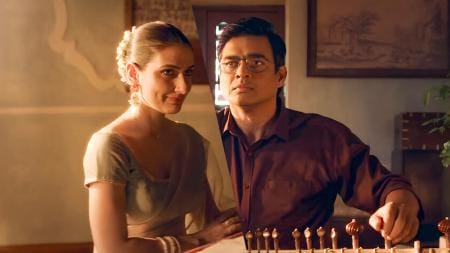
This absence of rounded female voices, despite the film’s thematic promises, feels like a glaring omission. It’s as if the film is carefully stripped down to make its politics more palatable to an audience not quite ready to hear all that women have to say.
Asymmetry and aesthetic feminism
Moreover, the film seems to valorise a troubling asymmetry in gender expectations. Madhu is rendered almost impossibly ideal: charismatic, multilingual, artistically gifted, financially independent, emotionally open. She dances, plays the piano, teaches French, and offers to move to Shrirenu’s hometown while also supporting them both. In contrast, Shrirenu is portrayed as a man of modest means, a Sanskrit teacher in his 40s, whose notable quality is that he is an honest man who “tries.” We see this when Shrirenu, in his monologue towards the end, says, “Par hum koshish karenge…Aur galtiyan hongi, par hum maafi mangenge.” And yet, this effort alone is sufficient to justify Madhu’s love for him. We are also not given much insight into the personality or career of Joy, the neighbour, for whom Kusum leaves her husband. Such a dynamic quietly affirms the entrenched belief that a man need only offer good intentions, while a woman must be exceptional to be considered worthy.
The film seems to valorise a troubling asymmetry in gender expectations. Madhu is rendered almost impossibly ideal. In contrast, Shrirenu is portrayed as a man of modest means, a Sanskrit teacher in his 40s, whose notable quality is that he is an honest man who “tries.” Such a dynamic quietly affirms the entrenched belief that a man need only offer good intentions, while a woman must be exceptional to be considered worthy.
This imbalance is neither subtle nor incidental. It becomes clear when, on their first date, Madhu says, “Bas aapki honesty pe dil aa gaya mera.” While men in the film continue to expect the extraordinary, women are still encouraged to settle for sincerity. It reflects a broader societal expectation: that women must constantly overperform while men are applauded simply for emotional availability. It’s a paradigm that mirrors real-world relationships, but the film’s failure lies in its refusal to critique this disparity. Instead, it romanticises it.
Even more frustrating is the way the film sidelines the opportunity to explore male vulnerability with any real complexity. Shrirenu’s loneliness, his internal struggle with traditional masculinity, the emasculation he experiences in a society increasingly uncertain about gender roles, and the casual dismissal from his patriarchal father figure, Bhanu, all are introduced, but never developed. The film gestures at these psychological textures but retreats into the comfort of a conventional love story, as though emotional exploration is too indulgent a detour.
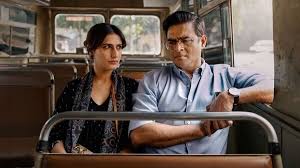
Interestingly, while Shrirenu is permitted to become gentler and is praised for it, Madhu’s strength is only validated when paired with traditional femininity. Her intelligence must be tempered by grace, her independence softened by nurturing, her success never allowed to eclipse her emotional availability. She may step outside conventional gender roles, but only so long as she remains aesthetically and emotionally “feminine.” The film thus imposes a quiet condition: women can be powerful, as long as they are palatable.
A romance that refuses to rebel
As a romance, Aap Jaisa Koi delivers on charm and is undeniably pleasant. It offers aesthetically pleasing frames, red-brick walls, green transom windows, and the misty nostalgia of Kolkata. But if you sit down for a watch, expecting more than just a charming love story, if you seek a film that intends to shift the cultural needle, it may leave you wanting.
A restrained rebellion, it gives us women who want, who choose, who even leave, but only within a framework that ultimately reaffirms male centrality and emotional modesty. It acknowledges that patriarchy exists, but it stops short of dismantling it. It softens it, makes it romantic, even desirable.
It is this very gentleness that makes Aap Jaisa Koi so watchable and so insufficient. In trying not to alienate, it also refuses to transform. In the end, one is left with a question, perhaps the most important one of all: Did the film succeed in exposing the hypocrisies of a patriarchal society, or did it merely repackage them in the language of sensitivity and love, asking women to remain flawless while men are pedestalised simply for trying?
About the author(s)
Oindrila Gupta has a penchant for handcrafted papers, hibiscus tea, and all things vintage. She is a voracious reader and finds herself more in love with words, with each passing day. With 6+ years of experience, she is currently engaging in projects in the capacity of an editor, strategist and brand consultant; helping non-profits, small businesses and writers, journey from their first project to their first masterpiece. Over the years, she has worked with organisations like Litro Magazine (UK), Wolf Books, The Swaddle, The Plated Project, WeUnlearn, Icy Tales, Tata Steel, etc. She strives to seek out projects that she is passionate about and particularly enjoys working on those with a strong impact angle.
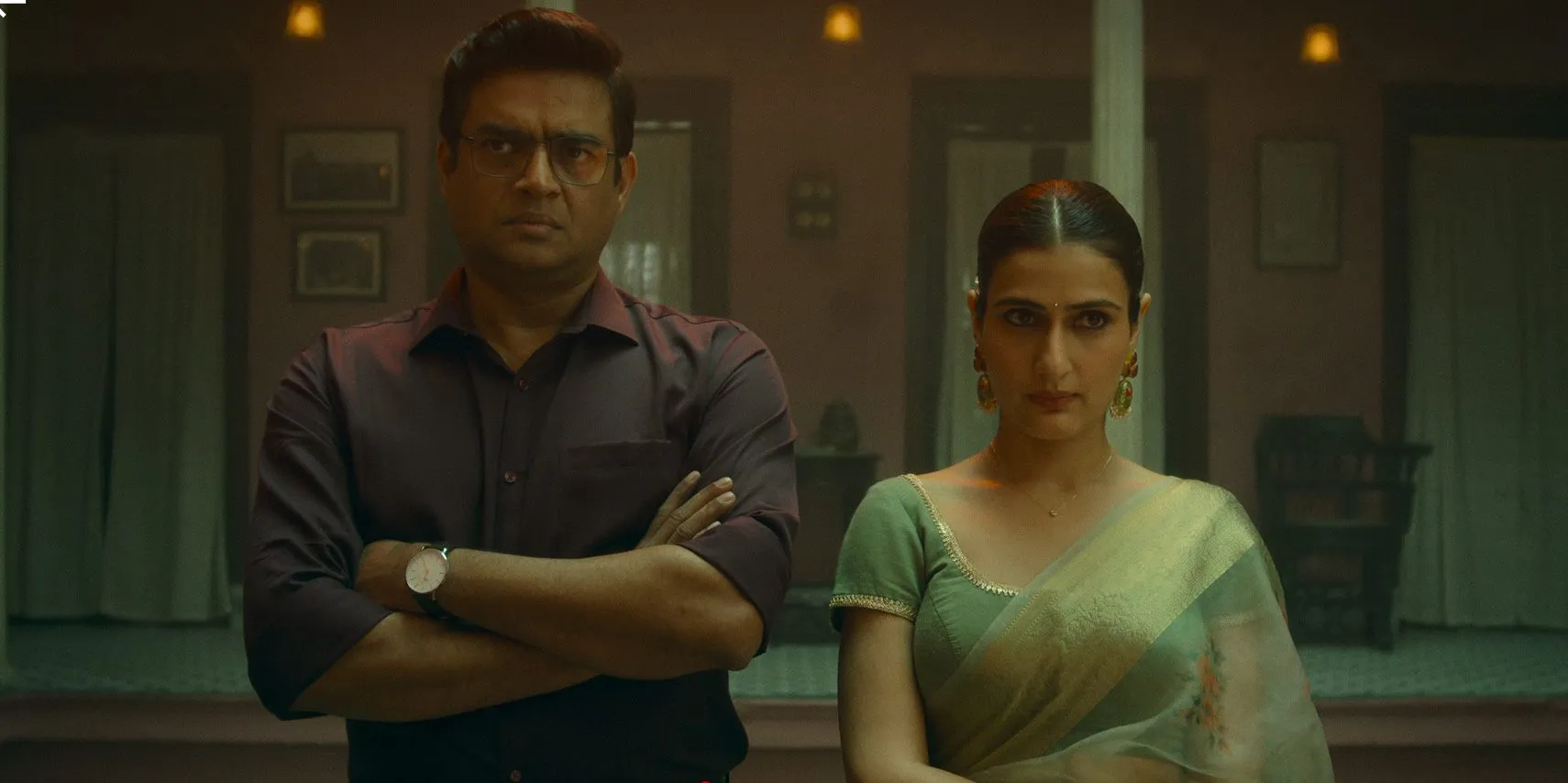



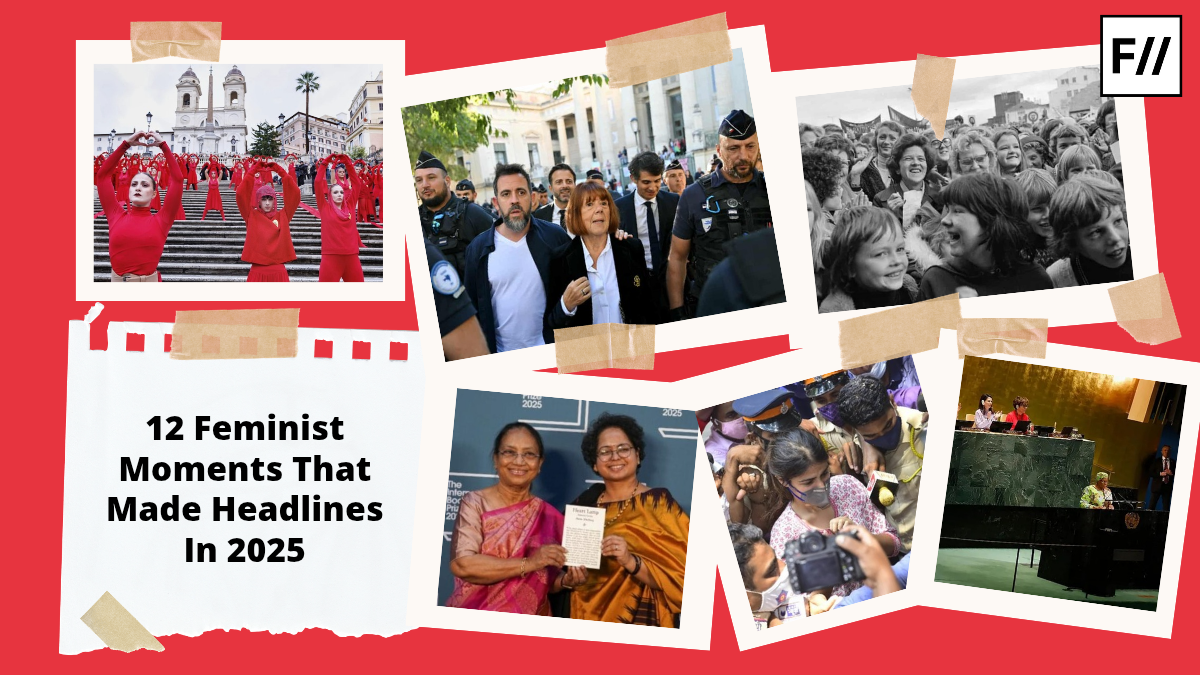

thank you i was so weirded out by all the reviews hailing the romance to be great its not feminist at all it felt so fake. Shrirenu being insecure, shows up later when he imagines men chasing after Madhu and the need for control after was the correct depiction of such men who seek pity for their shortcomings and make you miserably responsible. i like the female loneliness aspect and couldhv been explored better when she still chooses to leave, this seemed more like a warning how loneliness will make you settle for men like these.